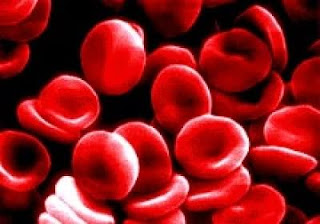 Nursing Diagnosis: Imbalanced Nutrition Less Than Body Requirements
Nursing Diagnosis: Imbalanced Nutrition Less Than Body RequirementsDefinition: lack of nutritional intake to meet the metabolic needs of the body.
Defining characteristics:
- Weight 20% or more below the ideal
- Reports of food intake is less than the RDA (Recomended Daily Allowance)
- Pale mucous membranes and conjunctiva
- Weakness of the muscles used for swallowing / chewing
- Injury, inflammation of the oral cavity
- Easy to feel full, shortly after the chewing of food
- Reported or the fact of lack of food
- Reported a change in taste sensation
- Feeling of inability to chew food
- misconceptions
- Losing weight with enough food
- Reluctance to eat
- Cramps in the abdomen
- Poor muscle tone
- Abdominal pain with or without pathology
- Less interest in food
- Capillary blood vessels from fragile
- And diarrhea or steatorrhea
- Hair loss is pretty much (loss)
- Hyperactive bowel sounds
- Lack of information, misinformation
- Inability to enter or digest food or absorb nutrients associated with biological factors, psychological or economic.
Nursing Diagnosis for Anemia: Imbalanced Nutrition Less Than Body Requirements related to inability to absorb nutrients associated with biological factors
NOC:
Nutritional Status
Criteria:
- Intake of nutrients (nutrients) is adequate
- Adequate food and fluid intake
- Adequate energy
- According to body mass
- Weight according to age
- The size of the nutritional needs of the biochemistry within normal range
NIC:
Nutrient Management
- The review of food allergy
- Collaboration with a dietitian to determine the amount of calories and nutrients it needs patients.
- Increase consumption of protein and vitamin C
- Give the substance of the sugar
- Make sure eat a diet containing high fiber to prevent constipation
- Monitor the amount of nutrients and calories
- Provide information about the nutritional needs
- Assess the patient's ability to get the nutrients it needs
- Monitor change in body weight
- Monitor the type and amount of activity is usually done
- Monitor the environment for food
- Schedule of treatment and no action during a meal
- Monitor skin turgor
- Monitor drought, dull hair, and brittle
- Monitor nausea and vomiting
- Monitor levels of albumin, total protein, hemoglobin, and hematocrit levels
- Monitor pallor, redness, and dryness of the conjunctival tissue
- Monitor intake of calories and nuntrisi
- Note the presence of edema, hiperemik, hypertonic papillae of the tongue and oral cavity.
- Record if the magenta-colored tongue, scarlet
No comments:
Post a Comment